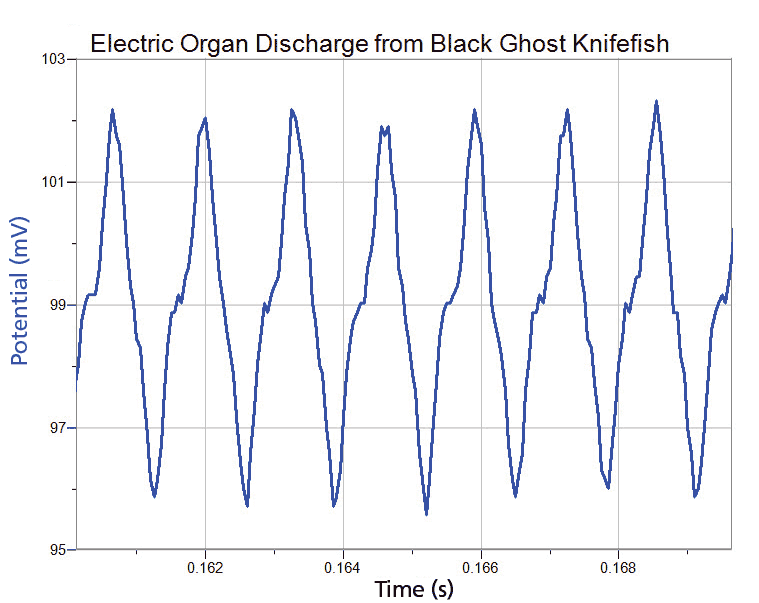With its increased frequency response and external grounding pin, our new and improved Instrumentation Amplifier can now be used to record the electric signal from an electric fish. Many animals can sense things that humans cannot; for example, some fish create and sense electric fields. Weakly electric fish, such as the black ghost knifefish, create an electric field around their bodies by activating a very specialized muscle called the electric organ. This organ produces a rapidly oscillating electrical signal around the entire fish. Changes in this electric field are detected by special cells called electroreceptors that are located in the skin of the animal. Weakly electric fish use this sense to navigate in dark and murky water to find food and to communicate with other electric fish.
Follow these steps to record the electric signal from an electric fish:
- Purchase a black ghost knifefish from your local pet store. Place the fish in a small fish tank equipped with a heater, and allow the fish to equilibrate overnight.
- Attach a pair of test leads with miniature alligator clips to the inputs of a Vernier Instrumentation Amplifier. The test leads that are supplied with the Vernier Circuit Board can be used for this purpose. Attach a piece of bare copper wire to the free ends of the test leads and place them in the fish tank. To get the best signal, position the test leads at opposite ends of the tank. Attach another test lead to the grounding pin on the back of the amplifier. Secure the free end of this lead to the top or side of the fish tank. Set the switch on the Instrumentation Amplifier to ±200 mV and connect the amplifier to your Vernier Interface (LabQuest 2, LabQuest, LabQuest Mini, or LabPro).
- Change the duration of data collection to 250 ms and change the sampling rate to 20,000 samples per second. You are now ready to collect data. Turn off the power to the heater, air pump, and any lights for the fish tank. Begin data collection to record the electric signal from your fish. When you have finished sampling, turn on the air pump, heater and lights for your fish.
- Zoom in on a small sample of your data to see the electric signal from your fish. The frequency of the waveform from this species should be between 700–1100 Hz. The amplitude of the signal will vary as the fish moves around in the tank, but should be highest when the tail and head of the fish are parallel to the recording leads.
You can see what the electric signal should look like from the graph below. For more information, contact John Melville at jmelville@vernier.com.

